
views
- Weigh your cat on a home scale to check if it’s around the average healthy weight (10 pounds (4.5 kg)), or the weight appropriate for its breed.
- Examine your cat’s physique for figure, and check to see if you can easily identify bony parts like the ribs, spine, and shoulders.
- Talk to your veterinarian to get the most reliable information about your cat’s ideal diet and exercise.
- Alter your food type and feeding schedule, introduce feeding toys, and walk your cat on a cat harness to help them lose weight.
How much should a cat weigh?
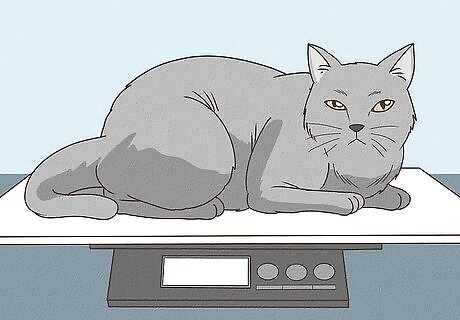
Domestic cats should weight about 10 pounds (4.5 kg). Of course, just like any other animal, cats’ ideal weights vary by breed: small cats like Siamese and Persians should range from about 5–10 pounds (2.3–4.5 kg). Standard breeds like tabbies and shorthairs range from 8–10 pounds (3.6–4.5 kg), and large breeds like Maine Coons average 10–25 pounds (4.5–11.3 kg). Place your cat on a home scale and take note of the reading. Hold a small treat in front of your cat’s face to encourage them to stay still on the scale. A cat is overweight if it’s 10% over its breed’s ideal weight, and is considered obese if it’s 20% or more over that weight. If your cat falls outside the weight range of its breed, consult a veterinarian.
How to Tell if Your Cat is Overweight
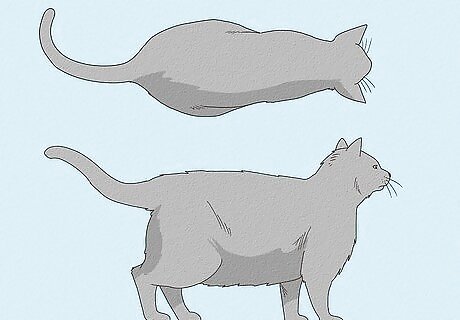
Examine the shape of your cat’s body from different angles. You can start determining if your cat's overweight by looking at them. Looking from above, you should notice a distinct “waist,” or a thinner area between the back of the rib cage and the hips. If there is no waist or if your cat’s waist is wider than either their hips or ribs, your cat may be overweight. Cats who are at a healthy weight have what is called an “abdominal tuck.” This means the area just behind their ribs should have a smaller diameter than the chest. Many cats have a saggy bit of flesh that hangs down between their back legs, referred to as the "primordial pouch." If your cat is otherwise bony, this small pouch of skin is unlikely to indicate a weight problem.
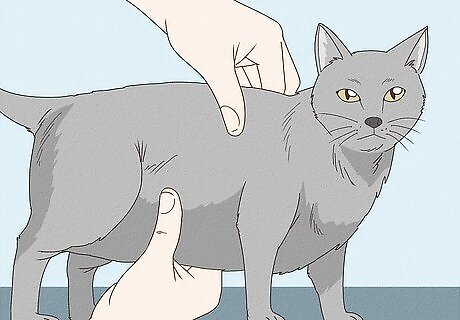
Feel for your cat’s ribs, spine, and other bony areas. A cat's ribs, spine, hips, and shoulders should be fairly bony to the touch. Run your hand along the side of your cat, and see if you can feel the ribs without applying too much pressure. While very visible and pointy bones may indicate your cat is underweight, in a healthy cat you should be able to easily detect ribs, hip bones, spine bones, and shoulder bones through gentle petting. Also examine the base of your cat's tail. You should also be able to feel bones near the base of your cat's tail. Lumps or fat deposits in this areas may be a sign of feline obesity. Consult a vet if you're unable to feel these bones due to layers of fat, or are otherwise unsure.
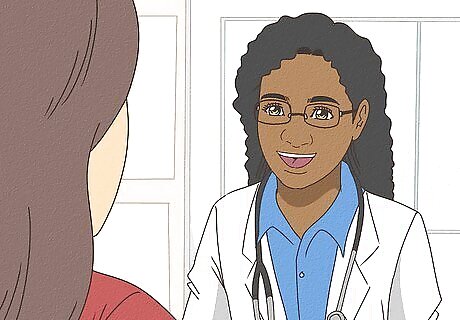
Ask a veterinarian about your cat’s weight. The best way to know for sure is to have a professional give their opinion. Take your cat to a vet, and discuss your cat’s ideal weight, as well as any causes of excess weight. These can include overfeeding, lack of exercise, or underlying health conditions. Obesity can affect your cat’s range of motion, as well as increase their risk of arthritis, diabetes, and urinary infections, so it’s important to talk to a veterinarian about your cat’s health. If your cat has any other troublesome symptoms, like vomiting or diarrhea, let your vet know. They may want to conduct certain tests or lab work on your cat to rule out an underlying medical problem.
How to help Your Cat Lose Weight
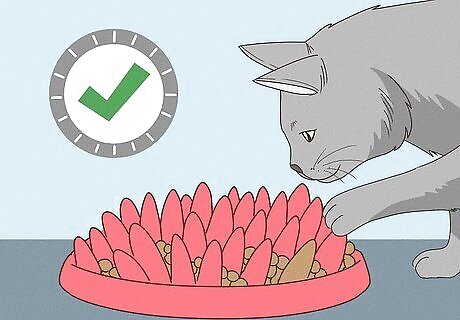
Change the type of food you feed your cat, and keep a consistent feeding schedule. Changing a cat's feeding schedule can make a huge difference in regards to their weight. Always consult your vet and make transitions gradual. If you suddenly swap out a cat's old food for a new diet brand, they may act out or refuse to eat. To feed an overweight cat, keep your cat on their regular food but offer them a little bit of the new food you're trying each day. Use a foraging feeder, which is a puzzle-like device a cat must solve to get the food trapped inside, encouraging exercise and weight loss. Talk to your vet about switching your cat over to canned food more likely to contain the vital amino acid taurine, which promotes your cat’s heart health.

Encourage exercise. Many cats do not get enough exercise. If your cat is an indoor cat, it's especially important they get moving each day. Buy your cat a variety of toys and take 20 to 30 minutes each night to play with them. Purchase a cat tree or (or make one yourself) for climbing, and consider getting electronic, interactive toys a cat can use while you're away at work. Hide treats around the house to stimulate your cat’s hunting instincts and offer them a fun, active way to exercise them. Purchase a cat harness and leash to let your cat safely experience the outdoors. Start small, only wandering a few feet from the house, and let your cat explore naturally, but keep an eye on them to make sure they don’t dash.
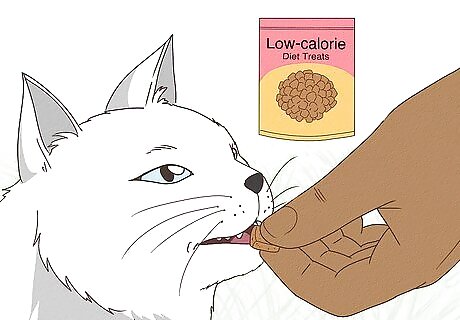
Reduce treats, or opt for diet treats. Treats are also a major culprit when it comes to cat weight gain. Try swapping out normal treats for low-calorie diet treats, or reducing the number of treats you give them by about half. This way, you can still reward and pamper your cat, while also helping them manage their weight.
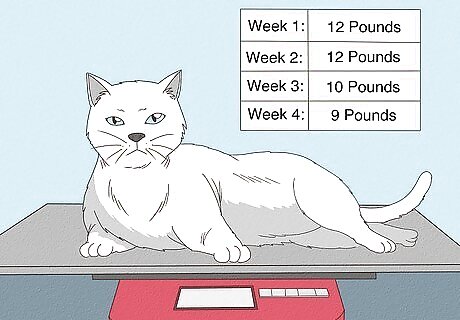
Monitor your cat's weight over time with your vet. Weigh your cat once a week (at the same time each day) and keep a record of their weight. Then, bring your cat into the vet every few months, and report your feeding and exercise routines. Your vet will be able to adjust your pet care habits to help you keep your furry friend healthy and active.


















Comments
0 comment